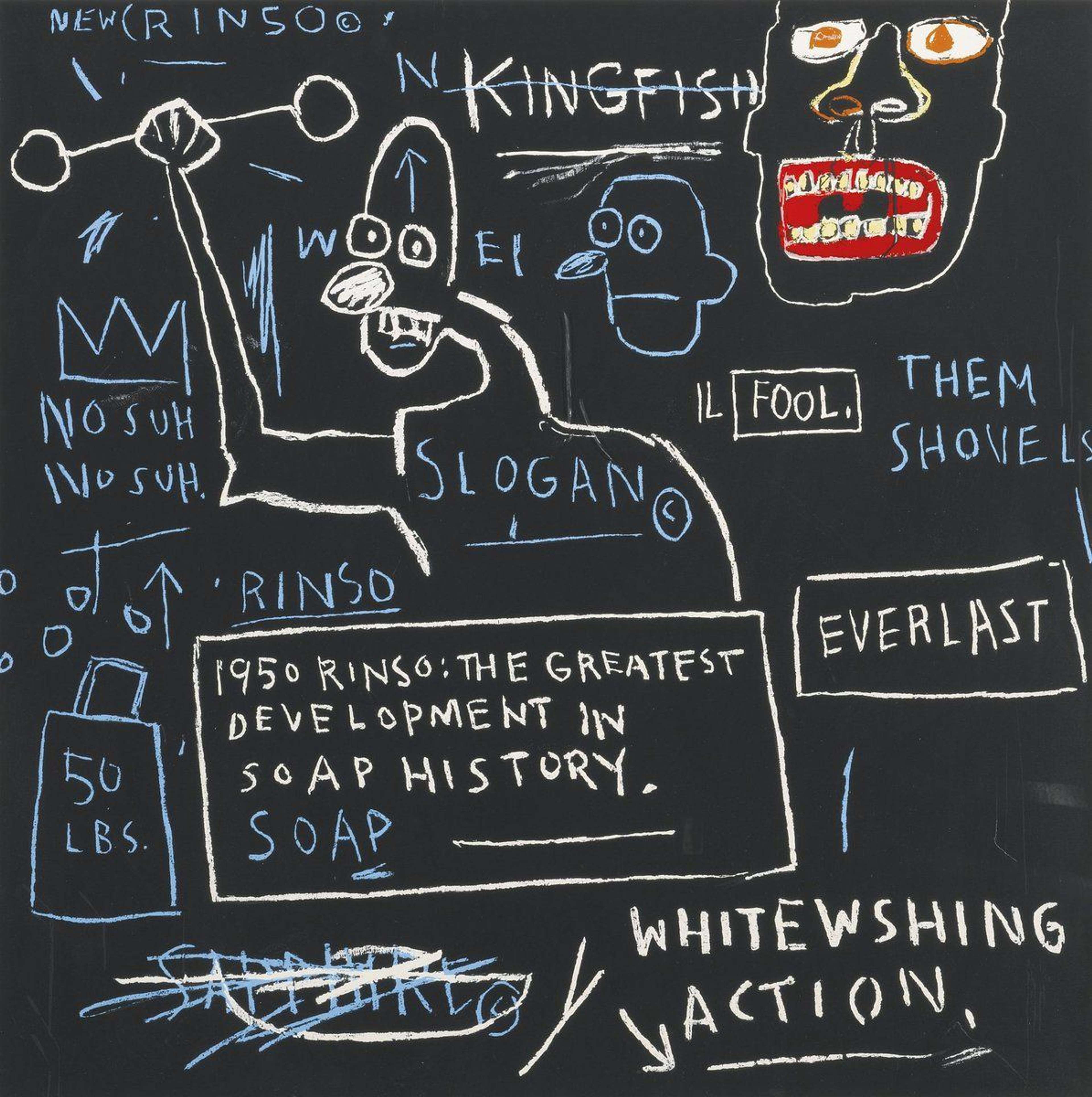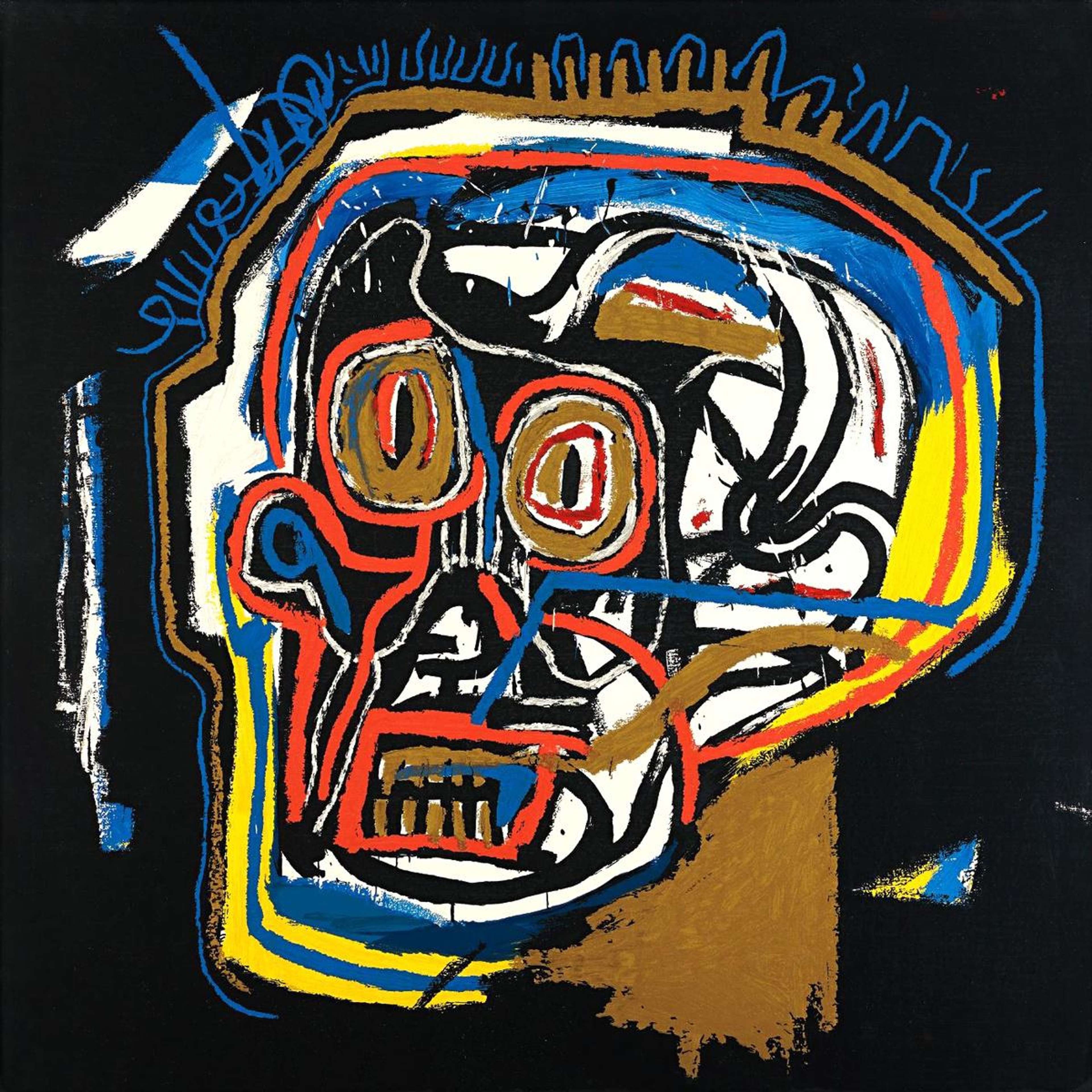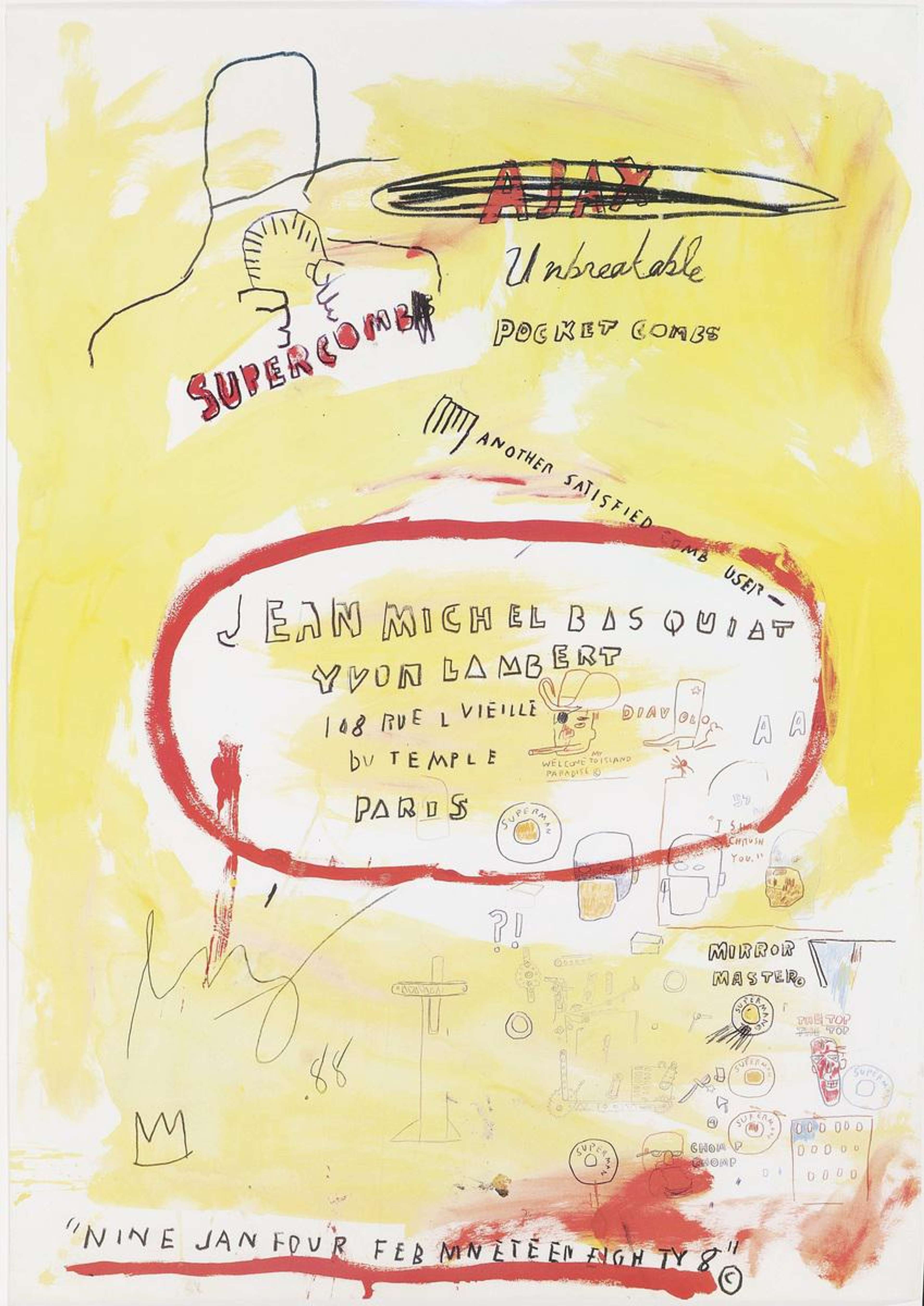A Deep Dive into Jean-Michel Basquiat's Materials and Techniques

 Bird On The Money © Jean-Michel Basquiat 1981
Bird On The Money © Jean-Michel Basquiat 1981
Interested in buying or selling
Jean-Michel Basquiat?

Jean-Michel Basquiat
57 works
Jean-Michel Basquiat is one of the most celebrated and iconic artists of the 20th century, known for his unique blend of graffiti, Street Art, and Neo-Expressionism. Basquiat's work is characterised by its raw power, emotional depth, and political commentary, reflecting his experiences as a black man growing up in a world that often ignored or rejected his voice. Employing a range of materials in his work, from found objects to traditional painting materials, Basquiat's art is testament to his creativity and resourcefulness and exemplifies how he created some of the most iconic artworks of his generation.
The Power of Basquiat's Materials: A Look into his Artistic Process
Basquiat's choice of materials played a significant role in his artistic process and the evolution of his style. From his early days as a street artist to his rise as an art world sensation, Basquiat experimented with a range of materials, including spray paint, acrylic, oil stick, and everyday objects. He often painted on unconventional surfaces like doors, boxes, and pieces of wood.
Basquiat's use of materials was more than just a matter of preference. By incorporating everyday objects into his work, from old books to discarded doors, he added layers of meaning to his pieces. His materials also allowed him to create a textured, expressive style that emphasised the rawness of his subject matter. Basquiat's use of bright colours, bold lines, and thick textures allowed him to convey the energy and emotion of his subjects in a powerful way. For example, in his iconic painting Charles the First, Basquiat used a mix of materials, including acrylic, oil stick, and spray paint, to create a dynamic work that captures the vibrancy of his subject.
Basquiat's choice of materials was integral to his artistic process and the evolution of his style. His use of unconventional materials and incorporation of found objects allowed him to create expressive works that conveyed the raw energy and emotion of his subject matter.
Basquiat's Creativity: The Roots and Sources of His Inspiration
Basquiat's artistic genius was fuelled by a rich mix of cultural influences. From his Haitian and Puerto Rican heritage to the vibrant music and art scenes of downtown New York City, his eclectic background and diverse interests are reflected in his art. African art and jazz music had an especially significant impact on Basquiat's work, particularly in his use of bold, graphic lines and vibrant colours. His love of jazz, which he often listened to while painting, inspired him to experiment with improvisation and spontaneity in his art.
Basquiat was also deeply influenced by the African diaspora, drawing inspiration from African masks, textiles, and symbols. The incorporation of these motifs into his work helped to challenge traditional art world hierarchies and highlight the contributions of marginalised cultures. His sources of inspiration influenced his style and themes he highlighted, resulting in a body of work that tackled issues of race, power, and social justice. His art could also be responsive to more immediate news, such as in Defacement (The Death Of Michael Stewart), which was originally painted onto Keith Haring's studio wall days after the incident. It is a powerful painting responding to the death of the young black artist Michael Stewart at the hands of the New York City Transit Police in 1983. The work serves as Basquiat's personal and political response, and it is considered one of his most overtly political works. Basquiat and Stewart were part of the same downtown scene and knew each other, and Basquiat was reportedly deeply affected by Stewart's death, expressing fears that he could have met a similar fate.
The Dynamic Techniques of Basquiat
Basquiat's art is recognised for its unique and dynamic techniques, which helped him create visually captivating and emotive works. One of his most notable techniques was the experimental use of a wide range of media, which he often combined in a single piece to create striking contrast. He also used a variety of markings and gestures to express himself, from simple lines and symbols to bold, sweeping strokes. These techniques allowed Basquiat to create works that were layered with meaning and emotion, with a raw and intense energy that drew viewers in. His use of text, symbols, and iconography was also significant, as he often included phrases and references to cultural figures and events that commented on contemporary society.
Basquiat's techniques and unique style were influential in the art world, inspiring a new generation of artists to experiment with new materials and modes of expression. His use of unconventional and found materials and his embrace of imperfections and chance elements has also been cited as an influence on the contemporary art scene. Some of his most famous artworks were created on doors, for example; similarly, many of his girlfriends complained of returning home to find their apartment and belongings, including clothes, covered in the artist's motifs. It was as if his artistry could not be contained, by a canvas or by the person.
Decoding Basquiat's Bold and Innovative Artistic Style
Basquiat was an iconoclastic artist who pioneered a new style of art that blended graffiti, street culture, and Neo-Expressionism. His style was heavily influenced by his surroundings, as he grew up in the gritty and vibrant atmosphere of New York City, and one of the most unique elements of Basquiat's style was his use of textual elements. He frequently included words and phrases, sometimes in a haphazard or seemingly random manner, to convey messages and themes. His use of symbols and imagery also added a distinctive dimension to his works. Basquiat often incorporated elements of African art and mythology, which gave his works a unique quality within an almost-exclusively white art world.
Basquiat's style evolved over the years, as he gained more recognition and honed his craft. In his earlier works as part of SAMO©, a partnership with the artist Al Diaz, he tended to rely more on text and simple imagery to provoke thought in the inhabitants of New York City. As his career progressed, however, his style became more complex and nuanced and he began to experiment with different mediums, including oil paint, acrylic, and mixed media. His approach to colour also became more sophisticated, and his artworks often demonstrate a strong contrast between two opposite colours.
Overall, Basquiat's art style was a radical departure from the norms of the art world at the time, and his unique approach to art-making has influenced generations of artists that have followed in his footsteps.
 Untitled © Jean-Michel Basquiat 1982
Untitled © Jean-Michel Basquiat 1982Unpacking the Layers of Basquiat's Untitled (1982)
Basquiat's Untitled (1982) is one of the most iconic pieces of art from the Neo-Expressionist movement. The painting features a powerful image of a skull, with Basquiat's signature graffiti-style overlaid on top of a textured canvas. He used a variety of materials and techniques to create this painting, including acrylic, oil stick and spray paint to create the vibrant colours and bold lines. The canvas itself has a unique texture, with layers of paint and scribbles creating a sense of depth and complexity; the skull is a recurring motif in Basquiat's work, representing mortality, violence, and the artist's connection with the African diaspora.
The painting also marks a shift in the art world's reception of Basquiat. Although he was always commercially successful, he was first rejected by the establishment. Famously, the MoMA rejected two of his paintings while the artist was still alive. Since then, however, Basquiat has become one of the most coveted artists for collectors and institutions alike. In 2017, Untitled (1982) sold at over $110 million, setting a new record for the artist and inspiring a new generation of artists and art lovers. Basquiat, who was only 21-years-old when he painted Untitled, set a record for American artists at auction at the time.
By deconstructing Basquiat's vision, it is evident that he had a profound impact on the art world, breaking down barriers and creating a new artistic language that transcended traditional boundaries.
Basquiat's Enduring Influence
Basquiat's brief but impactful career had a profound effect on the art world. He was one of the most celebrated artists of the 1980s, renowned for his raw and expressive paintings that blended street art, graffiti, and neo-expressionism. Basquiat's influence on contemporary art and culture cannot be overstated. His art gave voice to issues of race, class, and power, and he became an icon of the downtown New York art scene.
Basquiat's unique use of materials and techniques continue to inspire artists today. He often used found objects and everyday items in his paintings, such as doors, windows, and clothing, creating textured surfaces that added depth and meaning to his work. His use of symbols and text also added to the complexity and layered meanings in his paintings.
Basquiat's impact can be seen in the work of artists such as KAWS, Banksy, and Shepard Fairey, who continue to push the boundaries of art and culture in new and exciting ways. Basquiat's legacy lives on, inspiring artists and collectors alike to continue to explore new materials and techniques and challenge the status quo.
Exploring Basquiat's materials and techniques provides a deeper understanding of the his unique style and the impact he has had on the art world. Through the use of unconventional materials and techniques that reflect his diverse background and personal experiences, Basquiat created a powerful aesthetic that challenged traditional notions of fine art. By examining his creative process, we can appreciate the depth and complexity of his work, as well as what makes his art so powerful and relevant today. He has influenced generations of artists and continues to inspire and captivate audiences around the world.









